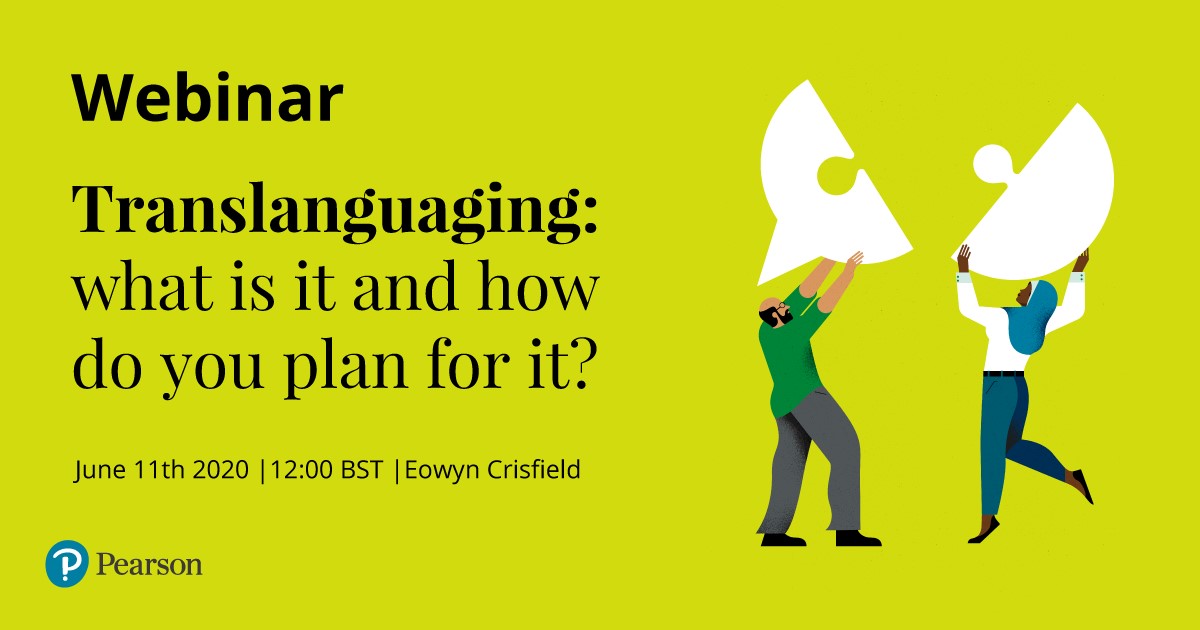
The benefits of being bi/multilingual are getting a lot of press these days, and parents are increasingly interested in ensuring that their children master more than their home language. In many cases, this means that parents are eager to have their children learn English earlier. This often prompts a choice for an English-only school, with the expectation that this will lead to the best results. How schools approach the task of educating children who do not speak the language varies, with regulations ranging from ‘English-only’ to multilingual classrooms.
So what do we know about bilingualism in development for children in school situations?
The development of the second language is strongly related to the development of the first (dominant*) language.
All too often, parents are given the advice to stop speaking their own languages with their children, in order to help their children learn the school language more quickly. This seems logical, and many parents will take this advice, as they want the best for their children. In fact, some parents will make this choice even when the school doesn’t advise it, simply because it makes sense that more English will help their children learn English more quickly.
Unfortunately, as logical as this theory seems, it is deeply flawed.
Over many years and in many contexts, research has clearly demonstrated that there is a relationship between first/dominant language development and learning a new language at school. When working with parents, I describe this relationship as being similar to a Jenga game: the blocks on the bottom of the stack provide the stable foundation for building upon. If we remove one of these foundational blocks, the stack becomes unstable, and less able to take new blocks. If we keep the bottom stable, we can add more blocks, or languages, with success.
Principle 1: Parents and schools must pay attention to the continued development of the home language(s) in order to support second language learning.
Academic progress is improved when both languages are developed through school.
In addition to the benefits for language development, the dominant language also has a role to play in academic progress. While it is often portrayed as ‘easy’ for children to learn a new language at school, this is simply not true. Trying to learn a new language while trying to learn poses children a double challenge. Each activity – learning a new language and learning all the content – is a full-time job, and children who are doing both are working very hard! Allowing or requiring students to manage academic content in their dominant language ensures that learning happens even when their English is still in development. Research also confirms this; children who have access to learning in their own language while learning the school language have better academic results than children who do not.
Principle 2: Learning should not be put on hold while language acquisition is happening.
Students acclimate and learn better when their own languages are present
The myth that children are little sponges when it comes to language also leads many parents and teachers to believe that they don’t mind at all being dropped into an environment where they can’t use their own language. Children are expected to get used to a new environment, make friends, and learn, all while learning a new language! In some schools, stringent rules are in place to ensure that children don’t use their own languages at all. Some schools are more empathetic, and let children use their own languages with their friends, for play.
However, if we want children to be ‘ready to learn’, we need to help them feel safe and connected in their new environment. For children who do not yet speak the school language, this means putting in place structures and systems that allow children to connect with their teachers and their peers during the language acquisition period.
In second language acquisition theory there is a concept called the affective filter, which describes a mental wall that learners build when they feel insecure in the classroom. The less they can communicate, the higher they build their protective wall , which inhibits learning. The more they are encouraged to use their own language to communicate and connect, the lower the wall, and therefore more learning can happen.
Principle 3: Use of children’s dominant languages can help them acclimate to the classroom and be ‘ready to learn’.
What does this mean for international schools?
It is widely accepted in the field of second language acquisition that bilingual programmes, where the focus is equally placed on development of the home language and the new school language, provide better results for most children than English-only programmes, in terms of language development and academic development.
That said, a bilingual programme is not always an option, especially in international schools with diverse and super-diverse populations.
There are, however, other ways in which schools and teachers can support the continued development of diverse home languages in the classroom. The most flexible way is through the considered use of pedagogical translanguaging.
In the next blog post in this short series, I will be looking at translanguaging – what it is and how you plan for it.
Watch the webinar: Translanguaging: what is it and how do you plan for it?
Recorded Thursday 11 June 12:00 BST | Watch on demand
Want to learn more about translanguaging? In this webinar, Eowyn Crisfield, specialist in bilingualism in education and teacher-training, looks at a framework for translanguaging and specific planning strategies for implementation.
*The dominant language is the language in which the child is most comfortable. It is not necessarily the ‘mother tongue’.
Further reading
Chumak-Horbatsch, R. (2012). Linguistically Appropriate Practice. Toronto: University of Toronto Press.
Cummins, J. (1981). The Role of Primary Language Development in Promoting Educational Success for Language Minority Students. In C. s. Education (Ed.), Schooling and language minority students: A theoretical framework (pp. 3-49). Los Angeles: California State Department of Education.
Cummins, J. (2001). Bilingual Children’s Mother Tongue: Why Is It Important for Education? Sprogforum, 7(19), 15-20.
Cummins, J. (2017). Multilingualism in Classroom Instruction: “I think it’s helping my brain grow”. Scottish Language Review, Winter 2017(33), 5-18.
May, S. (2008). Bilingual/Immersion Education: What the research tells us. In J. Cummins, & N. Hornberger (Eds.), Bilingual Education (pp. 19-34). New York: Springer US.
Piller, I. (2016). Linguistic Diversity and Social Justice: An Introduction to Applied Sociolinguistics. Oxford: Oxford University Press.
Sears, C. (2015). Second Language Students in English-medium Classrooms. Bristol: Multilingual Matters.
Spiro, J., & Crisfield, E. (2018). Linguistic and Cultural Innovation in Schools: The Languages Challenge. London: Palgrave Macmillan.
UNESCO. (2016). If you don’t understand, how can you learn? United Nations Educational, Scientific and Cultural Organization. New York: UNESCO. Retrieved December 12, 2016


